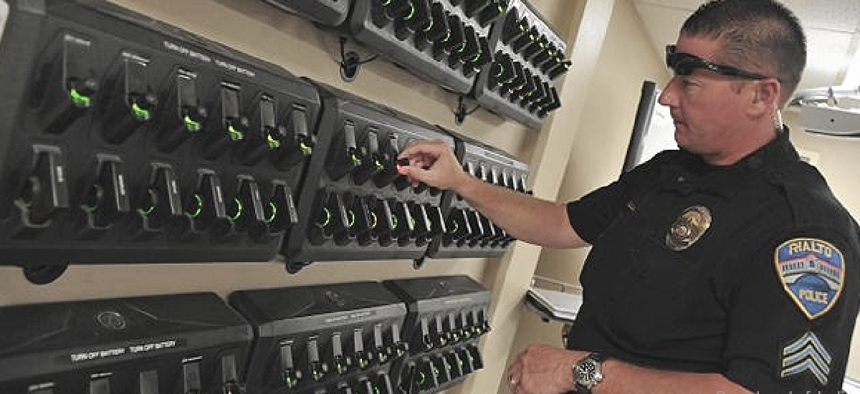Police body cameras are only one piece of the video equation

A federal initiative to help departments purchase 50,000 body cameras for police in the wake of recent high-profile incidents of police violence is only the first step in creating a full video system. Departments will have to store and manage terabytes of data for years, sometimes decades.
President Obama this month proposed a $263 million program for training and equipment to help make police departments more accountable after recent high-profile incidents of police violence in Ferguson, Mo., New York City and elsewhere. It includes $75 million over three years to help purchase 50,000 wearable body cameras for officers.
The cameras are light-weight, high-resolution alternatives to dashboard-mounted video systems already in use in many police cruisers. But the new cameras are only the first step in supporting a new video system for police. Once the cameras have been bought, departments will have to store, manage and secure terabytes of data, sometimes for decades. And because the quality of the video the cameras produce is improving, the amount of storage needed is likely to be much greater.
Many departments are familiar with the requirements of older black and white surveillance and dash-mounted video systems. But new body cameras can produce high-definition, full motion, wide-area color images. This is great for evidence but can quickly overwhelm current storage systems.
One camera can produce 2.3 gigabytes per hour, or 18.4 gigabytes per shift, said Dave Frederick, senior director of product marketing for Quantum, a storage solution provider. Because most cameras will be activated only during an incident, they probably will not be used eight hours at a stretch. But they still could produce 9 gigabytes of data per shift, he said.
How much storage this will require depends on a number of variables: The number of cameras in use, their format and resolution and the video retention policies. Department policies can call for saving video for anywhere from a month to a year, but if the video is used in court, rules of evidence can require that it be kept for years and – in the case of a conviction – possibly for the lifetime of the defendant.
One department with 1,500 officers found that it would need 700 terabytes of storage to accommodate body cameras, Frederick said, more than double what was needed by its older dash-cam system.
Quantum proposes a tiered-storage solution that balances the cost of storage with performance. Such a system typically would include a high-performance ingest system, typically using more expensive spinning disks to quickly take in new video and make it accessible.
Subsequent storage tiers could include lower-performance spinning disks and tape for archival storage, which is not as fast but is less expensive. Making such a system practical depends on the ability to automatically move data from one tier to another as needed, without violating chain of possession rules for video used as evidence.
Another consideration is that video being archived as evidence might have to be readable 25 years or more from now, when technology is likely to have changed dramatically. Anyone who has been stuck with a shelf of Betamax tapes can appreciate the challenge of future-proofing video archives.
The cloud could be an attractive short-term solution for storing police video, as long as security and management requirements can be met. But at some point, the long-term cost of renting storage space is likely to overwhelm the initial savings, and any department expecting to use video for the long haul will have to decide how best to acquire and manage its own storage system.
These challenges do not mean that police departments cannot or should not take advantage of new video technology to better document activities on the street. But they should remember that the camera is only the front end of a larger system, and once the “record” button is pushed, there will be an obligation to manage the video for years to come.





